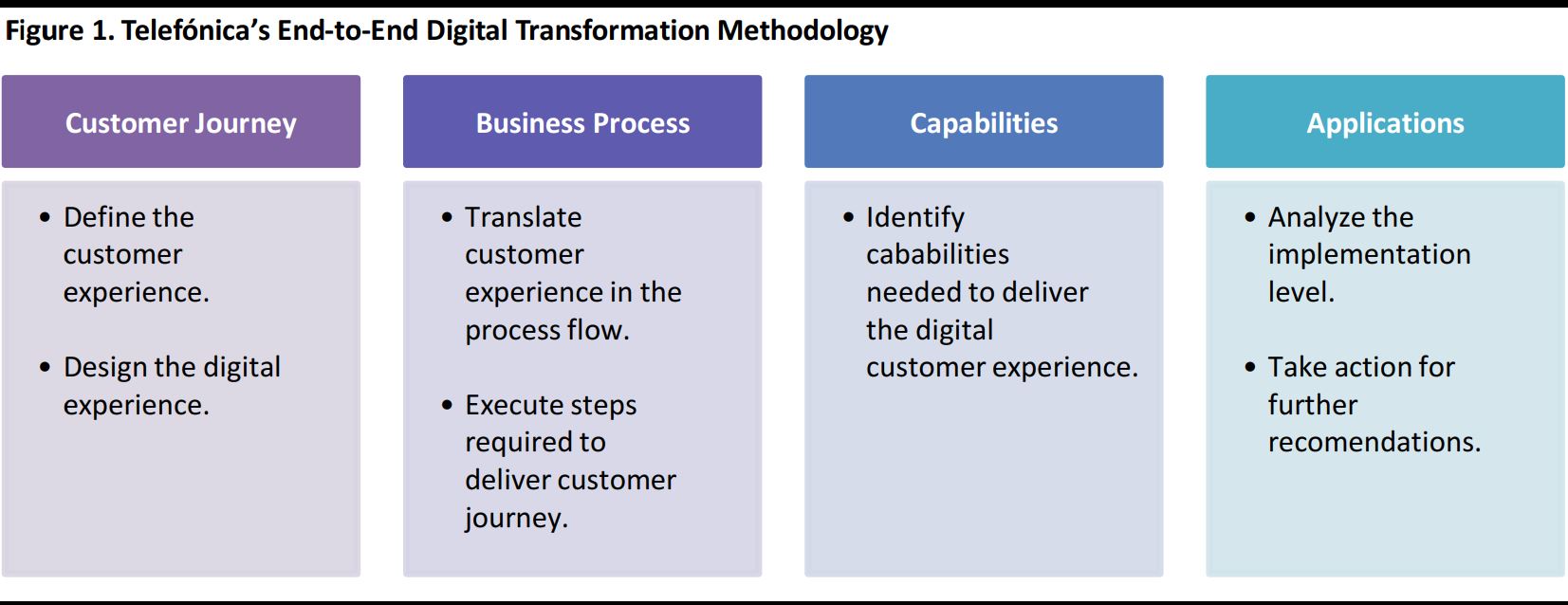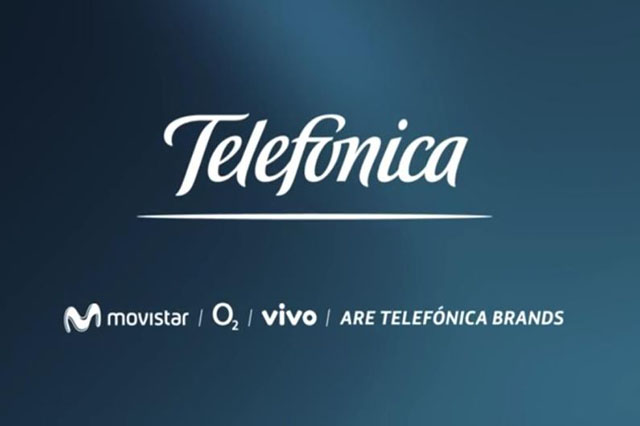Telefónica: The Transformation of a Non-Digitally Native Telecoms Company
This report provides an overview of the digital transformation that Spanish multinational broadband and telecommunications (telecom) service provider Telefónica has been undergoing since 2011. Despite its long history and transformation into an international conglomerate over the decades, in recent years Telefónica found itself confronted with internal inefficiencies and growing competition from new entrants. The company implemented a business-led, end-to-end digital transformation that we describe in detail in this report.

Source: telefonica.com/en/home
We believe non-digitally native retailers can identify with the issues that Telefónica went through and hope they can apply lessons learned in the case study of the company’s digital transformation to their response to the similar evolution taking place in the retail industry. The report formulates three main takeaways for retailers from Telefónica’s digital transformation are that digitalization should be: 1) business-led; 2) end-to-end; and 3) standardized.
Change Triggered by Internal Inefficiencies and Growing Competition
Telefónica was established in 1924 as Spain’s public telecom company. Like many other non-digitally native companies, Telefónica experienced significant pressure from the digitalization of the industry in which it operates.
Over the years, the company grew into a large organization with a presence in several countries and operating through a multitude of systems, which resulted in significant fragmentation and complexity. The complexity of the firm’s operations led to low efficiency and business functionality, negatively impacting the business. For example, Telefónica’s market share in its core market, Spain, declined from 36.2% in 2012 to 31.2% in 2014, according to company reports.
Internal efficiencies:The complicated structure that developed over time created several problems, such as a slow response to business needs, overspending on IT solutions, difficulties in obtaining consumer insights due to data complexity, problems in implementing automated business processes or new services, duplication of processes and databases, and issues with security and errors resulting from too many manual operations.
Growing competition: In addition, Telefónica was facing an increasingly competitive business environment, characterized by declining revenue in the traditional telecom segment, new competitors entering the market and technological and consumer behavior changes, such as the rise of mobile data usage.
To remain competitive in the digital era, the company was required to change in many ways, from how it operates to the way it interacts with customers.
Digital Transformation: A Business-Led Renovation
The first step in Telefónica’s transformation process was the simplification of its IT system, as a precondition for its subsequent digital transformation.

Source: iStockphoto
Themain part of the process was a business-led overhaul with the aim of delivering an end-to-end digitalization with the following four main objectives:
- Create a process-oriented and collaborative work environment:With digital transformation, Telefónica plans to become a company that prioritizes processes aimed at meeting customers’ needs and to foster collaboration between the firm’s employees involved in delivering the processes.
- Extend offers to include additional digital services and to become a multi product company capable of integrating third-party products: Telefónica is expanding its offering beyond the telecom segment to include services such as Internet of Things (IoT) solutions, big data, security, cloud and open web, in some cases in collaboration with partner organizations. For example, in 2016, the company, together with tech firm PTC, launched ThingWorx, an IoT platform for businesses.
- Have a complete understanding of customers’ needs using customer data: Telefónica started using customer data gathered through the application of digital technology to business processes to further improve customer service.
- Ensurea seamless multichannel customer experience: Through this digital transformation, Telefónica aims to provide a consistent approach to its customers interacting with the company through different touchpoints. As part of the digital transformation, Telefónica also aims to deliver fully automated online operations that do not require human intervention, which can be achieved using chatbots and artificial intelligence (AI).
Point 4 is particularly important, as it is the main goal of the digital transformation for a telecom company such as Telefónica, but it is also equally central for companies operating in other consumer-facing industries. In fact, as it occurs in retail, the various stages of the customer journey in telecom services (reaching out to clients through marketing, selling the product/service, after sales assistance and customer retention) occur through different channels. For example, O2, Telefónica’s mobile and broadband service provider in the UK and Germany, interacts with its clients through the phone,the Internet, mobile and brick-and-mortar stores.

Source: o2online.de
To deliver a digital experience to the end consumer, the entire value chain must be digital. To this end, Telefónica has focused on three areas:
- Customer experience: Delivering a truly digital experience to customers, by defining the customer journey in terms of digital experience goals.
- Operations: Improving efficiency and operational performance through an end-to-end digitalization. In 2013, for example, Telefónica expanded the use of electronics processing tools with its suppliers.
- IT: Providing the framework to support the digital customer experience and operations. In 2013, for example, Telefónica simplified its IT landscape, with 1,150 applications and 2,700 physical servers decommissioned.
Telefónica developed a methodology to deliver an end-to-end digital experience. This includes defining the customer journey in terms of digital experience goals, identifying the business process to deliver the digital customer journey, considering the capabilities (technical and/or employees skills) needed to deliver the business process and finally analyzing the implementation of the digital consumer experience and considering whether it can be improved. The process is summarized in the following figure.

Source: Telefónica/TM Forum
Standardization is instrumental in the implementation of the business-led digital transformation,and enables the integration between IT and business capabilities. The standardization process consists of the formulation of a consumer-centric process framework made of four stages of the consumer journey: marketing, selling and billing, customer care and servicing, and retention and loyalty.
As an example of the company’s dedication to its digital transformation, in 2011,Telefónica spun out an entire separate business, Telefónica Digital, which was tasked with the development of the company’s digital solutions for its customers. The business was closed in 2014 as part of a restructuring process which aimed to simplify the operations.
Benefits of the Digital Transformation
The measurement of the positive impact of the digital transformation on Telefónica’s business is made straightforward by the standardization process. The benefits of the company’s end-to-end digital transformation are measurable for each of the four stages of the consumer journey identified by the standardization process that we described above:
- Marketing: Digitalization made developing and launching new products and services more straightforward, reducing the time to market. It also allows the analysis of the results of marketing campaigns in real time.
- Selling and billing: Digitalization enables Telefónica to personalize customer relationships via all channels through which the interactions occur. It also makes the provision of services more efficient, for example, by enabling real-time activations.
- Customer service: Digitalization makes reporting and resolving problems much more straightforward. It also delivers real-time reporting of problems, status and resolutions, enabling further improvement in the way the company delivers customer services.
- Retention and loyalty: Digitalization enables Telefónica to build a customer knowledge database that can be used to tailor an approach for each customer and offer a more relevant, personalized service, which encourages client loyalty and retention.
Progress is measured in terms of customer experience, such as use and consumer satisfaction; operations such as key performance indicators (KPIs) including time to market and average handling time; and IT enablement, which is the degree of automation achieved.

Source: iStockphoto
In general, Telefónica’s digital transformation increased agility and reduced complexity. In 2016, the company reported the following results from the digitalization process: a 51% reduction in time to market; a 23% increase in customer problem resolution during the first interaction; the elimination of 35% of IT applications, 25% of physical data servers and 20 data centers; the reduction in the number of calls to call centers; faster average handling time at call centers and retail locations; a dramatic increase in online payment; and a 55% increase in virtualization levels.
Telefónica’s Digitalization: Lessons for Non-Digitally Native Retailers
Telefónica faced issues that many non-digitally native retailers are experiencing with the digitalization of the retail industry. The rise of online retailing, digital channels and the changes in consumer behavior created a new competitive environment in which once-prosperous retailers, such as department stores, struggle to compete.

Source: telefonica.com/en/home
Therefore, retailers can look at Telefónica’s transformation process to inspire their own digital transformation. The main takeaway points for retailers are:
- A business-led digitalization: Despite the technical nature of the issue, digitalization should not be limited to an upgrade of the company’s IT systems. Rather, IT should be the supporting framework for a business-led digitalization, which entails a profound change in the way the company interacts with consumers, customers and suppliers, and in the wayit runs its operations.
- An end-to-end digitalization: Digitalization should not be limited to the front-office, or to the back-office operations. If the process is implemented in silos, the improvement in the business operations will be insufficient. If the company digitalizes the way it interacts with customers, but fails to digitalize the supply chain that supports the service delivered to the client, it will only partially improve its KPIs.
- Standardization: To deliver an end-to-end digitalization throughout the business operations of a company, it is important to set up standard procedures to make it easier for the different stakeholders within the firm to implement the new business model and to coordinate the efforts with other departments. A level of standardization also makes it easier for business managers to measure progress, identify problems and improve future performances.
By taking into account these three main takeaway points from Telefónica’s digital transformation case study,non-digitally native retailers can make sure that the efforts they put into the digitalization of their business will result in a truly digital experience for their customers, which will ultimately help these companies to increase their competitiveness.






